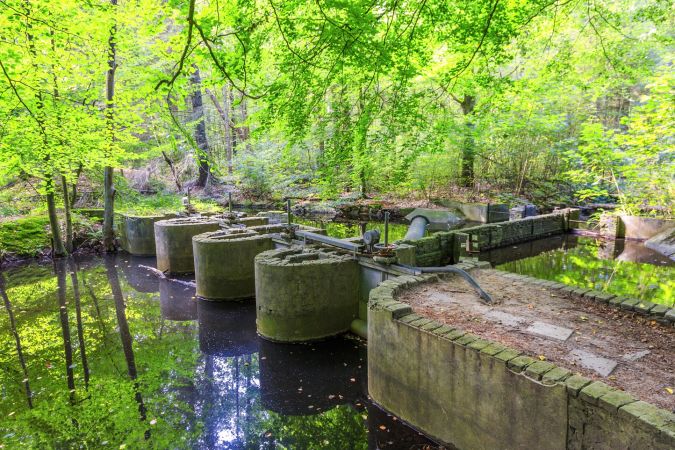Hydro International content manager Wim van Wegen finds inspiration just around the corner, at a former hydraulic engineering site that is now part of a forested nature area in the Netherlands.
I was born and raised in the Noordoostpolder, on land reclaimed from the sea. The house where I grew up was situated on the bottom of the former Zuiderzee – an inland sea and in fact a bay of the North Sea. From 1951 to 1996, a branch of the renowned Waterloopkundig Laboratorium, a hydrological laboratory, was located in that area. Between 1927 and 2008, the laboratory was an independent scientific institute in the field of hydraulics and hydraulic engineering. It is now part of Deltares, an internationally renowned research institute that mainly focuses on river deltas, coastal regions, river areas and offshore.
You can hardly imagine it now, but how do you calculate complex forces on large structures without a computer? Here, on what a few decades before was the seabed of the Zuiderzee, they did just that. There was enough space to construct large scale models of estuaries and harbours, which were used to predict the influence of hydraulic engineering works on the course of the water. Use could be made of the large differences in surface water levels in the area.
In 2002, the site was bought by Natuurmonumenten, a nature conservation organization that purchases and manages nature areas in the Netherlands. The area was named Waterloopbos. The water models can still be viewed; in the forest a footpath runs along the various waterways. There are waterworks from all over the world, constructed and tested in this polder forest. Test set-ups were made of the ports of cities such as Bangkok, Beirut, Istanbul, Lagos and Rotterdam, and many more: scale models that were built to calculate and design exactly what the port should look like. The leading question was how the human-built infrastructure would hold up to all the moving water. This place is definitely worth a visit!
I myself am a frequent visitor of the Waterloopbos, and always marvel at all the scale models dotted around the forest. During the walk, you can read information on signs next to each model that explain what the models once represented. The port of Lagos in Nigeria, Africa, is on the route, but also that of Beirut, and eventually the road leads to the Delta Works that were built in Zeeland after the great flood disaster in 1953. And then I think about how these major ports and other engineering projects are surveyed today: inspiration for new articles in Hydro International is just around the corner!


